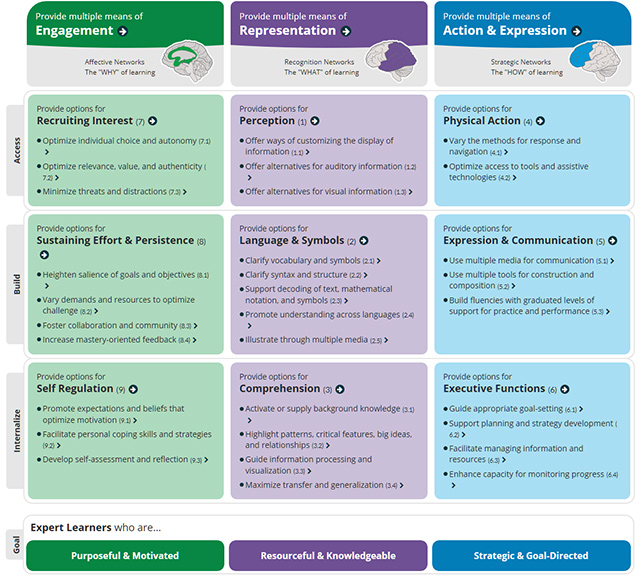The UDL Gears – My why
In this episode of UDL in 15 Minutes, Dakota Hudelson (my guest from Episode 8) helped me introduce The UDL Gears. It’s a project I’ve been working on for a long time and it’s something I’m passionate about. Here’s why.
To date (May 2023), there is no firm definition of UDL. (Note here: I love CAST, the creators of UDL, and take every opportunity I can to work with them. This is not a criticism of CAST.). There are dozens and dozens of books about Universal Design for Learning. There are hundreds of papers, whether research or white, and thousands of web posts about UDL. It is beloved by many and upheld as a tool that can lead everyone to create environments where all learners can thrive, but I’ve not seen an accessible resource that easily lays out that it “takes” to fully apply the UDL Framework. That’s why I created The UDL Gears.
Below, you see the UDL Guidelines:

The content within the UDL Guidelines is expansive. When you read the descriptions of the 31 checkpoints (the bulleted items), you realize the countless ways an environment, lesson, meeting, or product could be designed. Your head begins to swim with possibility and it can be overwhelming. But can a person apply those checkpoints and stay within the spirit of UDL? Are they really applying UDL? I argue, no.
Let’s look at the principle of Engagement, the guideline of recruiting interest and the checkpoint of minimize threats and distractions. The first idea suggested under that checkpoint description is for the instructional leader to “create an accepting and supportive classroom climate.” That seems very straightforward, but if that instructional leader doesn’t have a mindset that believes every learner can learn and a mindset that values every single learner, their ability to create an “accepting and supporting classroom climate” will be diminished and will only be applied to the learners who are “in favor.” And, if that instructional leader doesn’t have the skills to connect with and instruct diverse learners, that person will definitely struggle to “create an accepting and supportive classroom climate.” Finally, if that instructional leader doesn’t follow the practice of consistently providing equitable academic learning in general education, that person will not be able to “create an accepting and supportive classroom climate.” I only used a few of the indicators within The UDL Gears alongside this single idea within the checkpoint of minimizing threats and distractions to make this point. To fully enact the UDL Guidelines, they have to sit within an array of mindsets, skills, and practices.
(You can read more about how I determined what is in The UDL Gears.)
This is also why there is no such thing as a UDL Curriculum. You can’t purchase a content curriculum (e.g., math, science, English, etc.) that already has the wholeness of UDL woven into it. It can have ideas that link back to the UDL Guidelines, but it can’t fully promise the application of UDL because UDL is purely dependent upon the person planning, delivering, and reflecting on the instruction. The dynamics of human interaction rule the full application of UDL.
As I mention in the podcast, people around the world are so excited about UDL. It is seen as a tool that can help instructional leaders create inclusive environments that help all learners gain skills toward becoming purposeful, motivated, resourceful, knowledgeable, strategic and goal-directed. It is my hope that The UDL Gears will help all instructional leaders at all levels and across all professions examine their own mindsets, skills, and practices and continue their journey toward applying the fullness of UDL.
